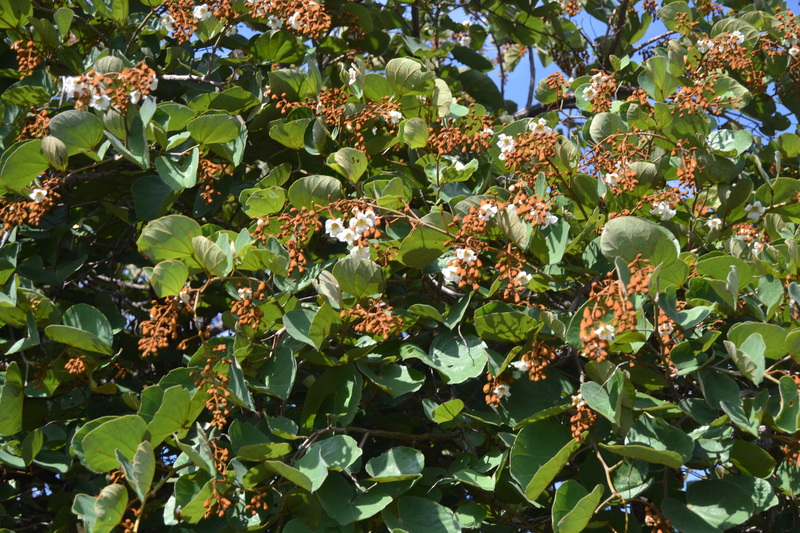Piliostigma thonningii.

|
|
Piliostigma thonningii Common Names: Camels Foot, Monkey Bread Scientific
Classification Kingdom: Plantae Clade: Tracheophytes Clade: Angiosperms Clade: Eudicots Clade: Rosids Order: Fabales Family: Fabaceae Subfamily: Caesalpinioideae Genus: Piliostigma Species: P. thonningii Binomial Name: Piliostigma thonningii (Schumach.) Milne-Redh. Synonyms: Bauhinia thonningii Schumach., Bauhinia reticulata DC., Piliostigma reticulatum (DC.) Hochst. Morphological Description Piliostigma thonningii, known as camel's foot or monkey bread, is a deciduous or
evergreen shrub or small tree, typically 3–10 m tall, occasionally reaching 15
m. Key features include: · Bark: Grey to dark brown, smooth in youth, becoming rough and
fissured with age, exuding a resin when cut · Leaves: Large, bilobed, 5–15 cm long, 4–12 cm wide, leathery, resembling
a camel’s footprint or butterfly, glossy green above, paler below · Flowers: Small, 1–2 cm long, white to pale yellow, fragrant, in short
racemes or clusters, blooming October–March · Fruit: Flattened, woody pods, 10–25 cm long, 3–5 cm wide, dark
brown, splitting open when ripe to release 3–10 hard, shiny seeds Distribution and Habitat Piliostigma thonningii is widespread across sub-Saharan Africa, from Senegal to
Ethiopia, south to South Africa, including Nigeria, Mali, and Tanzania. It
thrives in: · Habitats: Savanna woodlands, grasslands, open forests, often near
termite mounds · Climate: Tropical, with rainfall of 500–1,500 mm annually,
temperatures of 20–35°C · Soil: Well-drained sandy, loamy, or rocky soils (pH 5.0–7.5) · Elevation: Sea level to 2,000 m Ethnopharmacology Piliostigma thonningii is a cornerstone of African traditional medicine, with
validated uses: Piliostigma thonningii,
commonly known as camel’s foot or monkey bread, is a widely used medicinal
plant in African traditional medicine. Various parts of the plant, especially
the leaves, bark, pods, and roots, are used for their antimicrobial,
anti-inflammatory, antidiarrheal, antimalarial, analgesic, antioxidant, and
wound-healing properties. Traditionally, it is used to treat fevers, coughs, bronchitis,
dysentery, diarrhea, ulcers, skin infections, and joint pains. The bark and
root decoctions are often administered for respiratory and gastrointestinal
conditions, while the leaves may be applied topically for wounds and burns.
Phytochemical studies have identified active compounds such as flavonoids,
alkaloids, tannins, saponins, and phenolics, which contribute to its medicinal
effects. Though widely used in ethnomedicine, further pharmacological and
clinical studies are needed to fully validate its efficacy and determine
appropriate dosages for therapeutic use. · Antimicrobial: Bark decoctions treat diarrhea and respiratory infections in
Nigeria; stem bark inhibits Staphylococcus aureus (MIC 31.25 µg/mL) (Akinpelu & Onakoya,
2006). · Anti-inflammatory/Analgesic: Leaf infusions ease rheumatism in Mali;
methanol extracts reduce edema in rats (40% at 200 mg/kg) (Abubakar et al.,
2024). · Antioxidant: Flavonoids in leaves combat oxidative stress in Ghana, with
DPPH IC₅₀ of 17.64 µg/mL (Boualam et al., 2021). · Anthelmintic: Bark expels worms in Senegal · Wound Healing: Crushed leaves heal ulcers in Tanzania; topical application
accelerates recovery (Igoli et al., 2005). · Antimalarial: Leaf-bark infusions reduce fever in Mali (Adiaratou et al.,
2005). · Digestive Aid: Bark decoctions relieve stomach aches in Burkina Faso. ⚠ Toxicity Profile: Safe at traditional doses; seeds contain
cyanogenic glycosides (low HCN risk if processed). High tannin intake may cause
nausea or nutrient malabsorption. Caution in pregnancy and with children due to
limited data (Afolayan et al., 2018). Additional Uses · Economic: Pods as fodder; wood for firewood, charcoal, tool handles;
bark fibers for ropes (Orwa et al., 2009) · Environmental: Nitrogen fixation, erosion control via deep roots · Conservation: Sustainable harvesting needed to counter deforestation References
External Links More Pictures |
|
| Compounds of Piliostigma thonningii. |
|
| References |